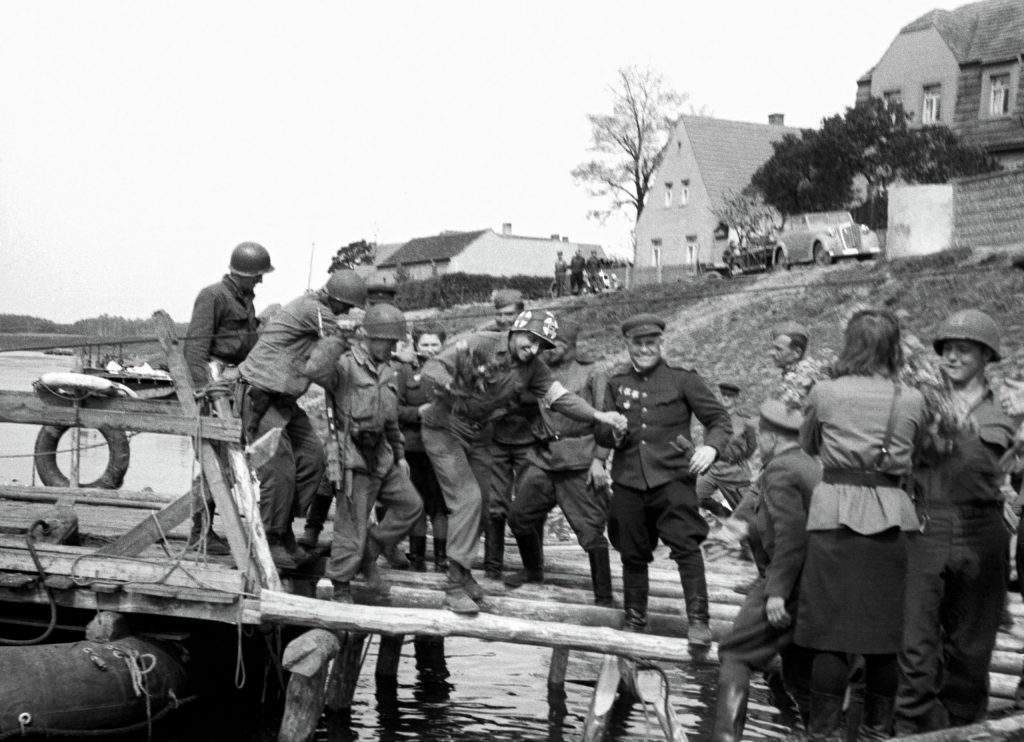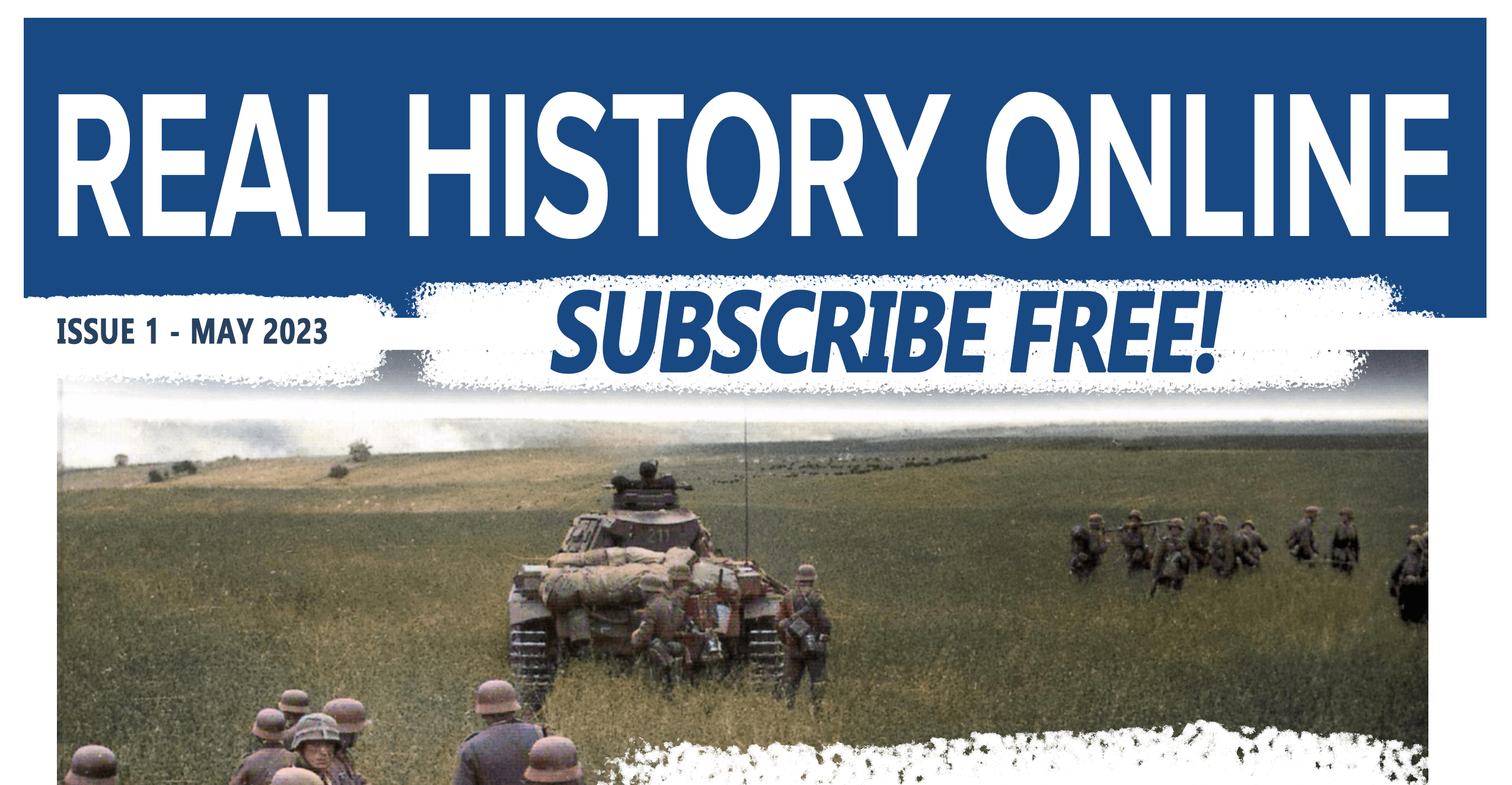American and Soviets Meet on the Elbe River WW2
The meeting on the Elbe is an episode of the Second World War , when on April 25, 1945, near the city of Torgau on the Elbe River, the troops of the 1st Ukrainian Front of the USSR Army met with the troops of the 1st US Army. As a result of the meeting of the Allied troops, the remnants of the German armed forces were split into two parts – northern and southern.
This was a very important event for the Allies towards ending the Second World War.
As a result of the Spremberg-Torgau operation, the troops of the 1st Ukrainian Front reached the Elbe.
The Operation:
On April 3, 1945, by directive of the Supreme Command Headquarters No. 11060, the troops of the 1st Ukrainian Front were tasked with:
1.Prepare and conduct an offensive operation in order to defeat the enemy grouping in the Cottbus area and south of Berlin. Seize the Beelitz-Wittenberg line no later than 10-12 days of the operation and further along the river. Elbe to Dresden. In the future, after the capture of Berlin, consider advancing on Leipzig.
2.The main blow with the forces of five combined-arms armies and two tank armies to inflict from the Triebel region in the general direction of Spremberg, Belzig.
However, the Front Commander Konev wanted to get the laurels commander logged in Berlin, and at the first opportunity Bids achieved in turn permits the advancing tank armies towards Berlin. As a result, the offensive of the front forces that began on April 19 was divided into two independent operations: the main mobile units began to attack Berlin from the south , and the combined-arms armies continued to fulfill their previous tasks.

Course of events
The advancing to the west of the Soviet 13th and 5th Guards armies were opposed in the Spremberg area by three German divisions from the flanks. However, even during the offensive of the tank armies on the Spree north and south of Spremberg, bridgeheads were captured, while there were no German troops in the gap between Spremberg and Cottbus. Following on the vanguard of the tank armies, the 13th Army on April 19 took advantage of the situation for a swift rush forward. Its 172nd Rifle Division of the 102nd Rifle Corps covered 22 km in a day, and the 6th Guards Rifle Division27th Rifle Corps – 20 km. The army found itself between the Cottbus and Spremberg groupings of the Germans, so Army Commander N.P. Pukhov had to use the remaining four divisions of the army to cover the flanks. The 350th Rifle Division of the 27th Rifle Corps, after crossing the Spree, turned south-west and south, aiming at the communications of the Spremberg grouping of the enemy, the 280th Rifle Division of the same corps turned its front to the south, providing the left flank of the army, 117th Guards the rifle division of the 102nd rifle corps turned its front to the north, and the 147th rifle division was also put forward from the second echelon to provide cover from the Cottbus side… The 24th Rifle Corps of the 13th Army remained on the eastern bank of the Spree and fought tight battles against the Spremberg grouping.
The 6th Guards Mechanized Corps , which broke away from the 4th Guards Tank Army , together with the 5th Guards Army, bypassed Spremberg from the south and by the evening of April 19, intercepted most of the roads along which the Spremberg group could retreat; by 22:00, the separation of the 6th Guards from the 5th Guards Army’s infantry was only 3-6 km. The German divisions withdrew to Spremberg on the eastern bank of the Spree threatened the rear of the Soviet troops rushing westward, so one of the front’s first-priority tasks was to eliminate the German bridgehead as soon as possible. To prevent the danger of Spremberg turning into a “fortress” holding the communications center in the rear of the advancing troops, it was decided to take the city by storm.
The Spremberg area was surrounded on three sides by a Soviet artillery grouping ( 3rd and 17th artillery divisions of the 7th breakthrough artillery corps, 4th artillery division of the 10th breakthrough artillery corps), while leaving a corridor for the enemy’s retreat to the west… On April 20, at 10.30 am, the assault on Spremberg began with a powerful artillery preparation. at 11:00, units of the 33rd Guards Corps went over to the offensive. By evening, the city was taken, which allowed the main forces of the 5th Guards Army to concentrate on advancing westward.
Meanwhile, the 13th Army on April 20 at a rapid pace advanced along the corridor laid by the tank armies, and advanced 30 km, without encountering strong enemy resistance; by the end of the day, reached the Berlin-Dresden railway on the line from Waltersdorf to Brenitz.
Three German divisions driven out of Spremberg abandoned active operations and decided to break out of the encirclement through the forests to the northwest to join Wenck’s 12th Army. The operation began on the morning of April 21, and by noon the encirclement reached the town of Kraushe already occupied by Soviet troops. The Germans were able to take it only by the evening of April 21. On the morning of April 22, they continued their journey westward, now passing through a meadow between two villages already occupied by Soviet troops. After breaking through the defile, the remnants of the three divisions ceased to exist as a whole, scattering into small groups. Having learned about the turn of large forces of Soviet troops on Berlin and the offensive on Dresden, the encircled people, not eager to face a strong enemy, decided to make their way to the southwest and dropped out of the game as an active force in the battle.

On the same day, April 21, units of the 33rd Guards Rifle Corps of the 5th Guards Army joined forces with the 24th Rifle Corps of the 13th Army in the Neu-Weltsov area , closing the encirclement ring around the remnants of three German divisions. The German units that did not have time to break through to the west were scattered, and the Spremberg grouping of the enemy ceased to exist.
On April 25 at 13:30 in the zone of the 5th Guards Army, in the Strela area, on the Elbe River, units of the 58th Guards Rifle Division met with a reconnaissance group of the 69th Infantry Division of the 5th Army Corps of the 1st American Army. On the same day, in the Torgau area on the Elbe River, the head battalion of the 173rd Guards Rifle Regiment of the same 58th Guards Rifle Division met with another reconnaissance group of the 69th Infantry Division of the 5th Corps of the 1st American Army.
The first meeting took place when an American patrol commanded by First Lieutenant Albert Kotzebue crossed the Elbe. On the east bank, they met Soviet soldiers under the command of Lieutenant Colonel Alexander Gordeev. On the same day, another American patrol (commanded by Second Lieutenant of the US Army William Robertson) met with Soviet soldiers Lieutenant Alexander Silvashko on the destroyed bridge over the Elbe near Torgau.
On April 26, 1945, the commanders of the 69th Infantry Division of the US Army and the 58th Guards Rifle Division of the Red Army met in Torgau. It was then that a photograph of Robertson and Silvashko was taken shaking hands. The company commander, Senior Lieutenant Yanvar Eremeev, became the first Soviet soldier to cross the Elbe at dawn on April 24.
After the meeting and the joint victory, the soldiers and officers hugged each other, shook hands and fraternized. They were all very different and learned a lot about each other with great interest. Soviet officers, for example, were very surprised by the relaxedness of the American servicemen and their desire to receive any thing in memory of this meeting: be it a cap or stars from the shoulder straps. They also changed for hours, cigarette cases… The Americans really liked Russian borscht and Siberian dumplings. And, of course, they were convinced that Soviet soldiers and officers can not only fight valiantly but also have fun from the heart.















